Production dates: 2022 to Present
At the end of 2021, Honda finally unveiled their latest sports tourer. It had been in the works for a while, with rumours spreading like wildfire until finally, they lifted the curtain on the NT1100.
The new sports tourer is derived from the famous Africa Twin, utilising both the engine and steel frame from the leading adventure model.
Currently only available for select markets, including the UK, the NT1100 has made quite a splash since its release, with riders in the US itching at the bit to get the new model on their territory.
No doubt you’re eager for a deep dive into Honda’s new project, so let’s get started.
Save Money On Your Motorcycle Insurance
- You could pay less than £195*
- Compare quotes from 25+ UK providers
- Fill in one form to compare top bike insurers
Review
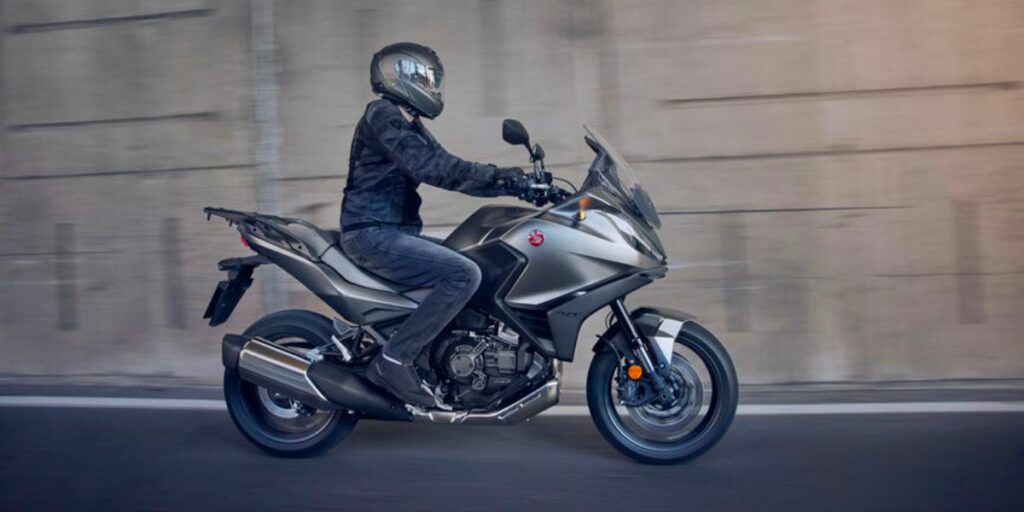
It’s no surprise that Honda used the blueprint of the Africa Twin for its new sports tourer. Adventure bikes in the past decade or so have become the ultimate touring machines—comfortable, with loads of storage and practical features.
It makes sense that those doing long distances would opt for the big Africa Twins and GS’s of the world.
However, Honda has noticed that all the best bits of an adventure bike paired with the fundamentals of a traditional sports tourer could fill the void for some riders.
It is the best of both worlds—adventure-bike performance and features mixed in with maximum comfort for long-distance riding. I think Honda has hit the sweet spot.
Engine and Transmission
It might be a new model, but the NT1100 is equipped with the tried and tested 1084 cc Africa Twin parallel-twin engine. The power plant is a solid, reliable unit that is tuned for strong, low, and mid-range torque.
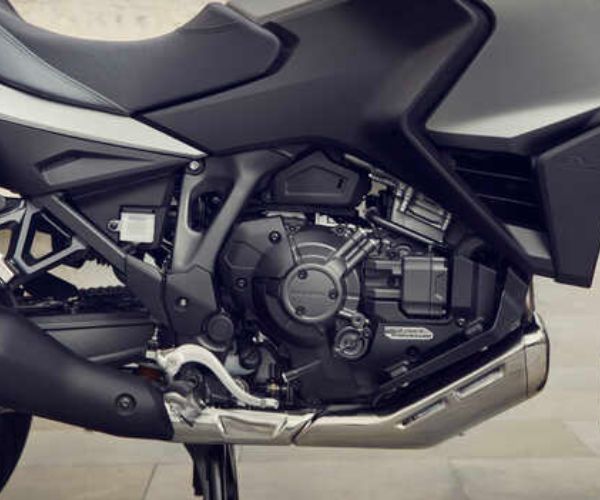
Acceleration is responsive. Increasing your speed is smooth and deliberate, and you can then stick it in fifth or sixth for a relaxed cruising experience at higher speeds.
You get a choice with the NT1100 between the traditional manual transmission and the DCT automatic-style transmission.
DCT has been used by Honda now for many years. It allows the rider to choose between manually shifting using up/down triggers on the handlebars or just riding the bike and letting it do all the gear shifting automatically.
For long-distance touring, the DCT will suit many riders, cutting out much of the work and allowing you to focus on where you’re riding and the scenery you find yourself in. However, automatic motorcycles aren’t for everyone, which is why Honda has chosen to let the rider choose which kind of transmission they would like.
There are several riding modes that you can choose from, including Urban, Rain, and Tour modes.
These modes tailor the engine power, traction control, and wheelie control settings to make sure you get the right amount of power and traction for your circumstances. There are also two user modes that you can adjust the settings manually to customise the ride.
Chassis, Suspension, Brakes, Handling
The NT1100 takes the frame from the Africa Twin and utilises it as the building block for the rest of the chassis. Although you would be hard-pressed to really recognise the frame as being one used on a leading adventure bike.
There is a new aluminium subframe attached, which caters for the bike’s luggage options, as well as 17” wheels front and back, with Showa suspension that really changes the dynamic of the bike into more of a relaxed tourer.
To host a big engine, you need a big frame, and as a result, the NT1100 is a big bike that weighs in around 238 kg, or 248 kg for the DCT version. The weight isn’t the end of the world, and the chassis has been kept as lightweight as possible to keep things down.
Showa suspension, front and back, provides maximum comfort on the road and great feedback for confident handling and light steering. The suspension is thought to be a bit soft in some situations, such as bumpy back roads, but this only seems to be a problem when you’re riding with a bit of spirit, testing the ‘sport’ in sport tourer.
The brakes are up to the task of slowing everything down, and the two-channel ABS is a handy feature for confident braking.
Overall, the chassis performs as you need it to. My only critique is that it is perhaps a little outdated performance-wise.
When you buy a Pan-European, you expect to ride in a calm, smooth manner typical of that era of sport-touring. The NT1100 feels a little like that, which will be frustrating for those expecting more out of it.
You could argue that with Africa Twin DNA, the NT1100 should be a bit more aggressive and punchy, but it’s clear that Honda has designed the bike to be a more traditional sports-tourer and the calm demeanour is a feature of that.
For those expecting serious sports-bike performance, the NT1100 might not work. For those who put more emphasis on the touring qualities, it could be the perfect bike.
Features, Comfort, Styling
Honda has been careful to ensure that the NT1100 is as comfortable as it is practical for long rides.
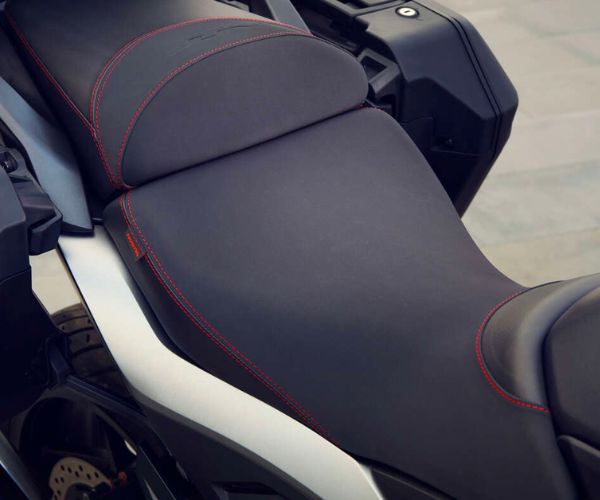
The seat is huge, wide, and padded, and your reach to the bars is an easy, elbows-bent motion. Your footpegs shift you into a neutral upright commanding riding position. Additionally, wide bars, heated grips, and an adjustable windscreen are all standard features for you to maximise your riding comfort.
There is plenty of space to move around when you start to get stiff on the move, and your passenger can also easily and comfortably be accommodated if needed.
Other standard features include cruise control and panniers, as well as a luggage rack on the rear ready to be loaded up.
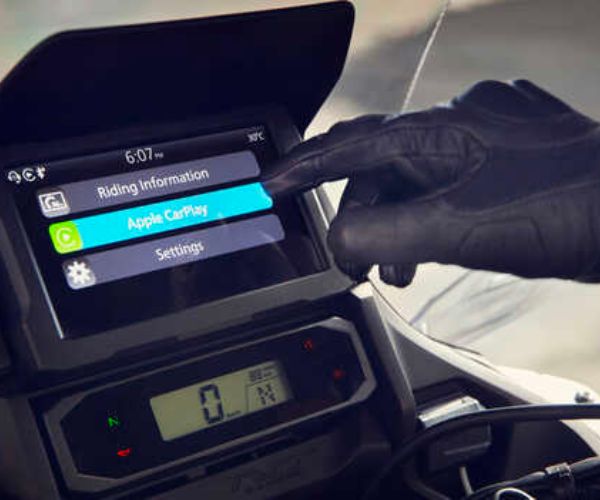
The bike has a 6.5” touchscreen with smartphone compatibility that has three display modes, and you can connect via Apple CarPlay, Android Auto, or Bluetooth connectivity.
Honda has also developed a range of accessories for the NT1100, including a comfort rider/passenger seat along with front fog lights and comfort pillion steps, which form their Touring Pack.
Other options include an Urban Pack or Voyage Pack, which helps you tailor the model to your exact needs, whether you are a hardcore commuter or a long-distance warrior.
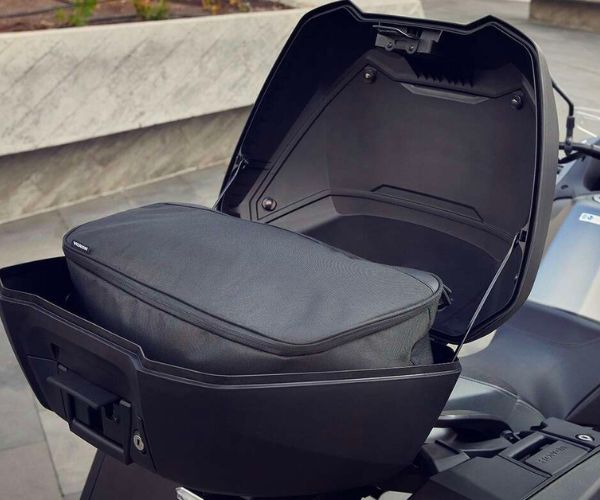
Clean and powerful-looking, the NT is styled in a very mature manner. It looks premium, like a tourer, with just some lines nodding to its adventure-bike links. It isn’t necessarily a head-turner, but it does have an engaging presence like it means business—and that business is touring.
Specs
Engine and Transmission
- Engine: 4-stroke, 8-valve, parallel-twin with 270° crank and uni-cam
- Capacity: 1084cc
- Bore x stroke: 92mm x 81.5mm
- Compression ratio: 10:1.1
- Cooling system: Liquid-cooled
- Starting: Electric
- Induction: PGM-FI electronic fuel injection
- Transmission: 6-speed manual or DCT option
- Final drive: Chain
- Clutch: Wet multiplate
- Max power: 100 horsepower at 7,500rpm
- Max torque: 104 Nm at 6,250rpm
Chassis and Dimensions
- Frame: Steel mono-backbone
- Front suspension: Showa 43mm SFF-BP inverted telescopic fork with dial preload adjust
- Rear suspension: Monoblock aluminium swingarm with Pro-Link, Showa gas-charged damper, and hydraulic dial preload adjust
- Front brakes: Radial mounted four-piston brake caliper, 310mm double-floating discs
- Rear brakes: Single-piston caliper, 256mm single disc
- Rake: 26.5°
- Trail: 108mm
- Wheelbase: 1535mm
- Length: 2240mm
- Width: 865mm
- Height: 1360mm
- Seat height: 820mm
- Kerb weight: 238 Kg/248 kg
- Fuel capacity: 20.4 litres
- MPG: Claimed 47 MPG
Buying One: Any Competition?
The NT1100 standard version starts from £12,499. For the DCT version, prices start from £13,499.
There are still a few 2022 models hanging around dealer showrooms, so if you hold out a few months at the end of the riding season, dealers will likely reduce their 2022 stock, saving you a pretty penny.
In terms of competition, the NT1100 has a few bikes to contend with on the market, including the BMW S1000 XR, the Yamaha Tracer 7 and 9 GT models, and even the Suzuki GSX-S1000GT.
There has been a bit of a shift in the touring world, with manufacturers leaning on the success of the adventure bike market to influence their tourers, as evidenced by the S1000 XR from BMW, where the BMW GS adventure line is evident. The Yamaha Tracer is Yamaha’s adventure line, but the option is there for the GT version (Grand Touring).
It’s no surprise, then, that Honda was inspired by the iconic Africa Twin for their new tourer. However, it’s evident that they have aimed more for a traditional sports tourer than an adventurer. Therefore, the NT1100 can fairly be compared with the GSX-1000GT, too, to some extent.
As a result of the NT1100 being a big mix of both adventure bikes and sports to form a touring package, it has sort of formed its own class and therefore stands alone from the competition. It has the looks of the BMW and Tracer but the comfort and practicality of the Suzuki.
In terms of pricing, the NT1100 is fairly priced compared to the other bikes and the DCT option arguably opens the model up to a slightly wider audience.
- BMW S 1000 XR: £15,750
- Yamaha Tracer 7/9 GT: £9,710/ £13,110
- Suzuki GSX-S1000GT: £12,499
Final Thoughts
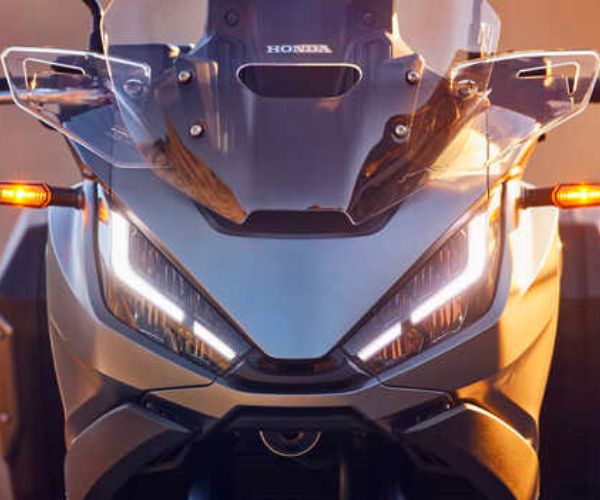
It might be too early to judge the NT1100 just yet, but the sport-touring capabilities of Honda’s Pan-European mixed in with Africa Twin DNA surely have to be a winning combination for serious tourers.
If you’re planning on some serious mileage, long trips, loads of luggage with a passenger, or the kitchen sink attached to the rear, then the NT1100 might just be exactly what you’re looking for.
All images via Honda
